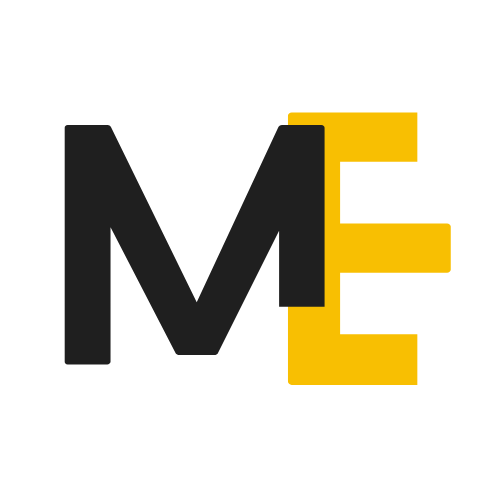From Series A to IPO: CPO Beth Steinberg Shares Her Playbook for Building a Talent Acquisition Function That Powers Growth
When you first join a company that’s scaling quickly, you can feel the energy, the pace, the potential. But look closer, and one of the clearest indicators of whether that rocket ship will sustain its flight is the strength of its hiring.
With that in mind, how does a Chief People Officer go about building their Talent Acquisition engine, knowing how critical it is to the company’s trajectory? Beth Steinberg, longtime ModelExpand advisor, client and seasoned tech CPO, shares her vantage point. Beth has scaled companies like Chime, BrightRoll, and Sunrun, from fewer than 100 to nearly 2,000 employees in just a few years – many times – and she’s sharing firsthand how she thinks about building TA. Below is our interview:
1. Begin with a Head of Talent Who Builds Real Business Partnerships
Q: When you’re deciding on Talent Acquisition leadership, what do you look for?
A: The best Talent Leaders build true partnerships with the business. Hiring isn’t just Talent’s job — it’s shared across leaders, hiring managers, and Finance. Look for someone who can drive this kind of accountability through:
Meaningful Metrics: Go beyond “Time to Fill.” These leaders track whether the business is providing timely feedback, investing in strong job descriptions, and actively participating. The right Talent Leaders influence behavior through clear expectations and partnership.
Transparency: Eliminate black boxes. Proactive TA leadership helps the business make decisions using data. Metrics should give everyone a clear view of what’s working, what’s not, and where ownership sits.
Joint Accountability: What gets measured gets attention. If we’re only measuring recruiter speed, we miss the hiring manager’s role in driving quality outcomes.
When Talent and business leaders hold each other accountable, hiring shifts from transactional to strategic.
“As a CPO, I look for a Talent Leader who sees hiring as a shared responsibility. When Talent, hiring managers, and Finance work together, you build teams that last. I’m not looking for a paper pusher.”
2. Play the Long Game: Don’t Just Fill Roles — Build Future Capabilities Through Hiring to Avoid Costly Missteps
Q: You’ve seen many companies in high-growth mode, what hiring strategies prevent bad decisions at scale from hurting the business later?
A: Talent can feel like a “short game” when moving fast — fill the seat, close the req, move on. But the real win is long-term planning and thinking methodically about future capabilities needed well in advance and working backwards to hire/develop so you are working much more proactively.
Talent Acquisition is a strategic partner when it partners with the business, People Partners, and others to think comprehensively about Talent and Talent Management. This is the part most companies skip — and it shows. Workforce planning is the process of aligning hiring with real business needs before opening reqs. Workforce planning isn’t about getting enamored with “rockstars” or chasing headcount numbers. It’s about:
Meeting quarterly with Finance, business leaders, and People teams to align on goals.
Asking: What’s the actual work? What level of talent do we need to get it done?
Resisting the urge to hire en masse without letting new hires reach productivity.
Questions to ask during hypergrowth:
Are we hiring for the competencies the business will need tomorrow, not just today?
Where can we develop people internally instead of defaulting to new external hires?
Do we frequently have re-looks, tough prioritization, and managers willing to flex with contractors or stopgaps rather than overhiring to get through demanding times?
The CEO and CPO set the tone here. Without their buy-in, you get misaligned expectations, hasty hires, and ultimately… layoffs and low morale. You have to move slow sometimes before you move fast to prevent issues that affect the business like high attrition rates, riffs and low morale which affect productivity and slow down businesses that can’t afford to stall their execution in the market.
3. The Cultural Reality Check: Be Honest About Who You Are as an Employer in the Hiring Process so You Attract the Right Talent
Q: Conversations have gone from numerous perks and work/life balance to people being worried about AI taking their jobs, how should companies approach the company culture discussion in the hiring process?
A: One of the most common pain points right now is cultural whiplash. Companies that went all-in on perks, outsized pay, and “growth at any cost” are now in a reset. Employees feel the shift — especially those who joined during the heyday.
Here’s the truth: there’s no one-size-fits-all culture.
“The best companies own who they are and hire for alignment and additivity. Changing the game every six months erodes morale, trust, and productivity.”
Set clear expectations in the hiring process so you attract people who genuinely want to be part of the ride and keep them aligned as you grow.
Final Thought: Talent as a True Business Lever
The healthiest organizations treat Talent Acquisition as a joint lever across Finance, Product, Engineering, and Leadership, not an isolated function. With the right accountability, foresight, business partnership, and cultural clarity, Talent isn’t just filling roles. It’s fueling the business.
And in fast-growth environments, this thoughtfulness and slowing down - which can seem counterintuitive - is actually the difference between scaling successfully and stalling out.
About ModelExpand
ModelExpand is a talent advisory firm that helps companies build a high-performing internal recruiting engine. We partner with your team to design the people, processes, and systems that drive consistent, faster, higher-quality hiring at scale. Contact us to learn more.




